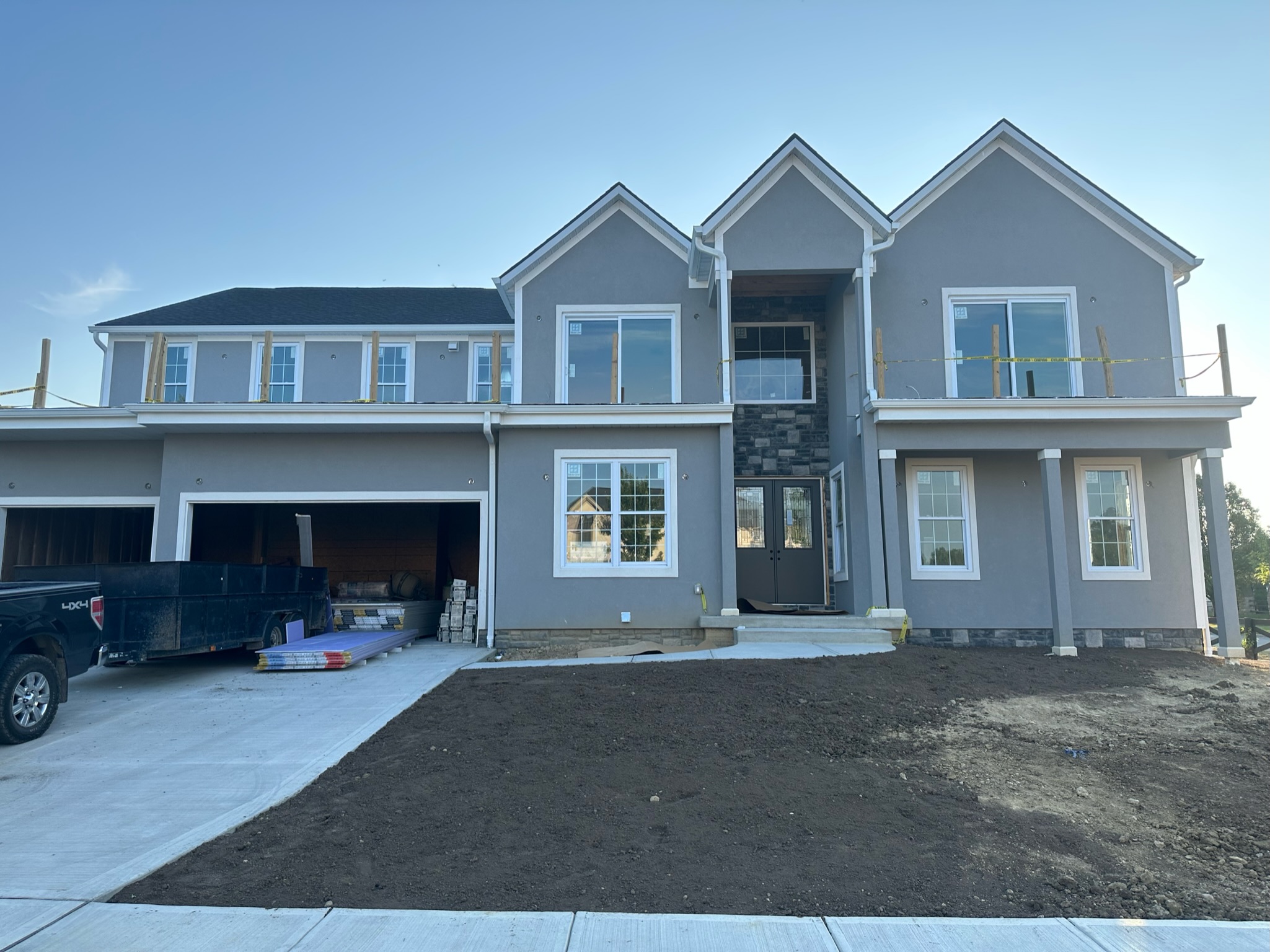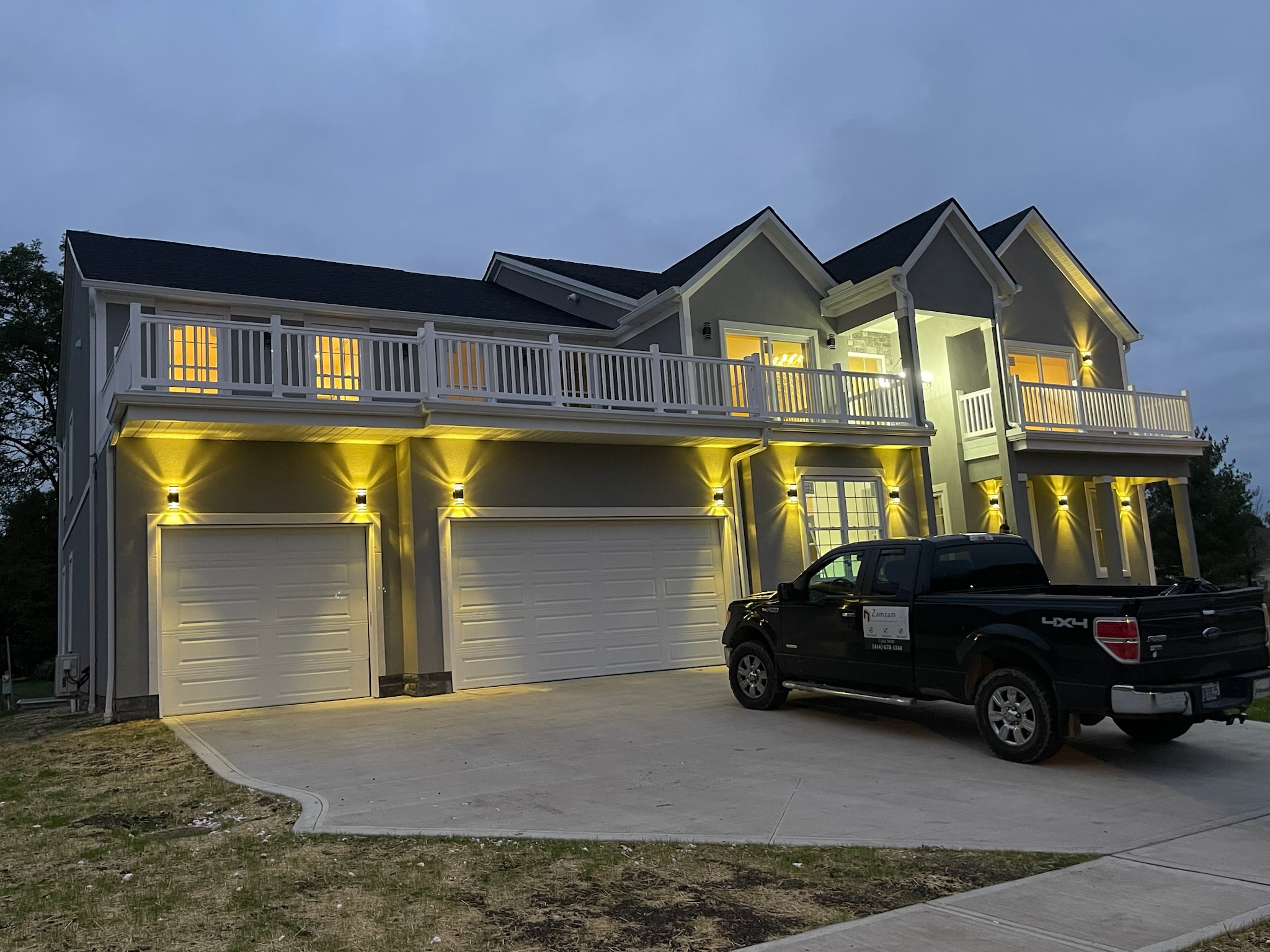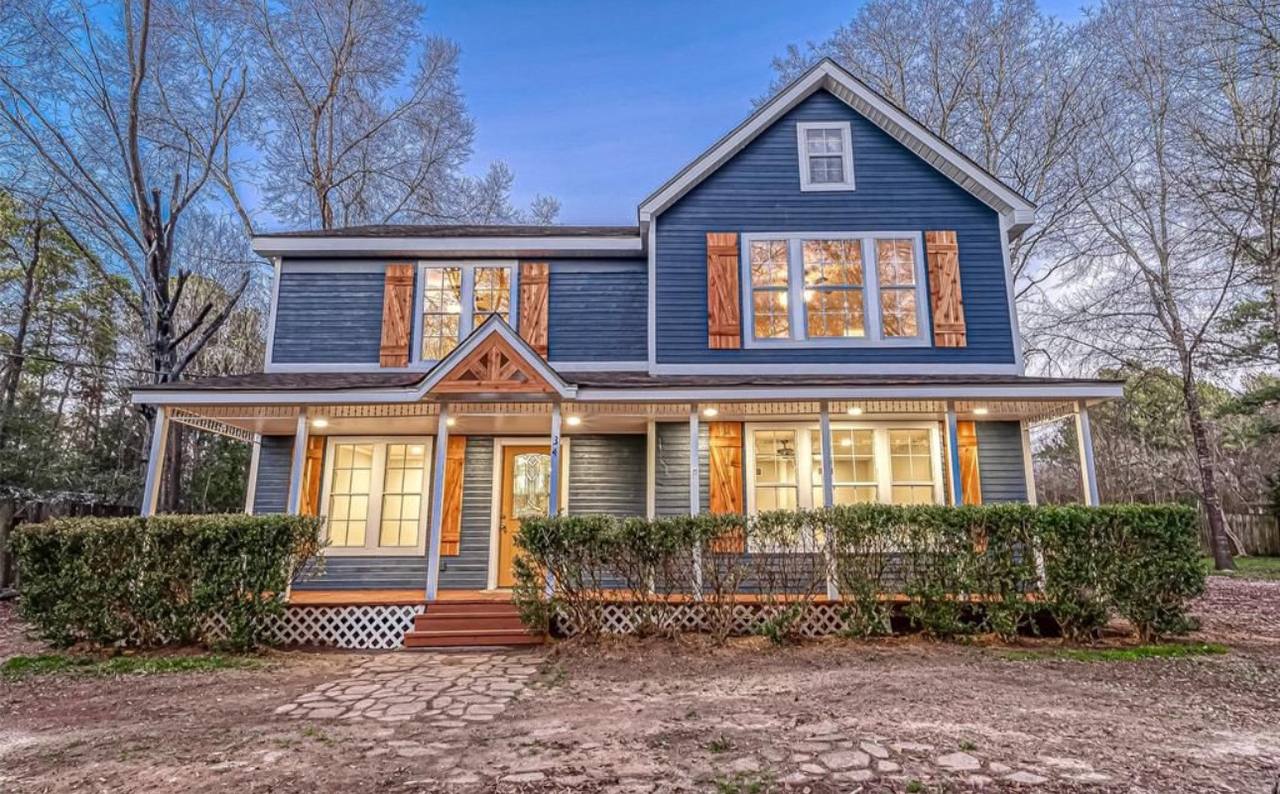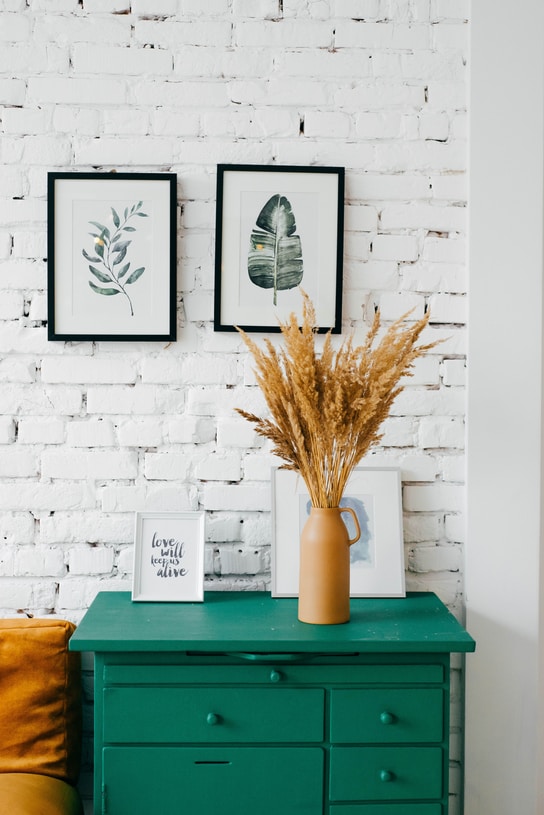Zam Zam Construction

ZAMZAM
ِAugust 7, 2024

Modern home construction is continually evolving, integrating new technologies and design philosophies to meet the needs of today's homeowners. From sustainability to smart technology and personalized spaces, here are the top trends shaping the future of home building.
In an era defined by technological advancements and environmental awareness, the construction industry is embracing innovation like never before. Homeowners today seek residences that are not only aesthetically pleasing but also functional, efficient, and sustainable. Let's explore the top 10 trends driving modern home construction.
Building materials play a crucial role in sustainable construction practices. Today, there is a growing preference for eco-friendly options that minimize environmental impact and promote energy efficiency.
Environmental Benefits
Sustainable materials such as bamboo and cork offer significant environmental advantages. They are renewable resources that reduce reliance on finite resources like timber. Additionally, these materials have a lower carbon footprint throughout their lifecycle, contributing to reduced greenhouse gas emissions.
Economic Benefits
Beyond environmental considerations, sustainable materials can lead to long-term cost savings. For example, recycled steel is not only durable but also reduces construction waste and can be reused in future projects, making it a cost-effective choice for builders.
Examples of Sustainable Materials
Innovative materials like bamboo and cork are gaining popularity in modern home construction. Bamboo is known for its rapid growth and strength, making it an ideal choice for flooring and structural elements. Similarly, recycled steel offers durability and versatility, supporting sustainable building practices without compromising on quality.
The integration of smart home technology has revolutionized modern living by enhancing convenience, comfort, and energy efficiency. From automated systems to intelligent appliances, these innovations are reshaping home design and functionality.
Integration in Modern Home Design
Smart home technology encompasses a range of devices and systems designed to automate and optimize household tasks. Key features include smart thermostats that adjust temperature settings based on occupancy and energy usage patterns, contributing to significant energy savings over time.
Smart Thermostats and Energy Efficiency
Smart thermostats, such as those offered by companies like Nest and Ecobee, learn user preferences and adjust heating and cooling settings accordingly. By optimizing energy usage, these devices not only enhance comfort but also reduce utility costs, making them a popular choice among homeowners seeking sustainable living solutions.
Home Automation Systems
Beyond thermostats, home automation systems enable remote monitoring and control of various household functions. From lighting and security cameras to entertainment systems and appliances, these integrated solutions offer unparalleled convenience and security, empowering homeowners to manage their homes efficiently from anywhere.




Energy efficiency remains a cornerstone of modern home construction, driven by the dual goals of reducing environmental impact and lowering utility costs. Builders are employing advanced techniques and materials to enhance the energy performance of residential properties.
High-performance Windows
High-performance windows feature advanced glazing technologies that improve insulation and reduce heat transfer, helping maintain comfortable indoor temperatures year-round. Low-emissivity coatings and gas-filled panes further enhance thermal efficiency, reducing reliance on heating and cooling systems and lowering energy consumption.
Insulation and Air Sealing
Effective insulation and air sealing are essential for preventing heat loss and drafts, thereby optimizing energy efficiency. Builders are increasingly using spray foam insulation and advanced sealing techniques to create a tight building envelope that minimizes air leakage and improves indoor comfort levels.
Open floor plans have become a hallmark of modern home design, replacing traditional segmented layouts with expansive, interconnected living spaces. This architectural trend prioritizes flexibility, natural light, and social interaction within the home environment.
Enhanced Natural Lighting
By eliminating interior walls and partitions, open floor plans maximize natural light penetration throughout the living space. Sunlight can freely travel from windows and skylights, creating bright, inviting interiors that promote a sense of spaciousness and well-being.
Improved Social Interaction
Open floor plans facilitate seamless interaction and communication among family members and guests, whether they are relaxing in the living room, preparing meals in the kitchen, or dining together in the adjoining dining area. This connectivity fosters a sense of togetherness and enhances the overall livability of the home.
In response to changing lifestyle needs, modern homes are incorporating multi-functional spaces that adapt to various uses and activities. These versatile designs maximize square footage and accommodate evolving household dynamics.
Home Office Spaces
The rise of remote work has fueled demand for dedicated home office spaces that support productivity and concentration. Multi-functional rooms can be equipped with ergonomic furniture, integrated technology, and soundproofing features to create a conducive work environment within the comfort of home.
Guest Rooms and Studios
Multi-functional spaces extend beyond work areas to include guest rooms, studios, or hobby spaces that can be easily reconfigured based on changing needs. Murphy beds, convertible furniture, and modular storage solutions enable homeowners to maximize space utilization without compromising on comfort or functionality.
Outdoor living spaces have emerged as an extension of the indoor environment, providing homeowners with opportunities to enjoy nature, entertain guests, and relax in comfort. These versatile areas enhance the overall appeal and functionality of residential properties.
Outdoor Kitchens and Dining Areas
Outdoor kitchens equipped with grills, countertops, and storage cabinets enable homeowners to prepare and enjoy meals al fresco, transforming outdoor gatherings into culinary experiences. Adjacent dining areas with comfortable seating and ambient lighting further enhance the dining experience, encouraging social interaction and relaxation in a picturesque setting.
Fire Pits and Outdoor Fireplaces
Fire pits and outdoor fireplaces serve as focal points in outdoor living spaces, offering warmth and ambiance during cooler evenings. These features create inviting gathering spots for family and friends, fostering memorable moments and extending the usability of outdoor areas throughout the year.
Health and wellness are increasingly influencing home design principles, with an emphasis on creating environments that promote physical and mental well-being. From natural lighting to indoor greenery, these design elements contribute to a holistic living experience.
Natural Lighting and Ventilation
Wellness-focused homes prioritize natural lighting and ventilation to enhance indoor air quality and create a connection to the outdoors. Large windows, skylights, and clerestory windows maximize daylight penetration, reducing reliance on artificial lighting and promoting a sense of openness and vitality within living spaces.
Incorporating Greenery Indoors
Indoor plants and biophilic design elements bring nature indoors, fostering a calming and rejuvenating atmosphere. Living walls, vertical gardens, and potted plants not only enhance aesthetic appeal but also purify indoor air, regulate humidity levels, and reduce stress, supporting overall health and well-being.
The desire for personalized living spaces has fueled a trend towards customization in home construction, allowing homeowners to tailor their residences to reflect individual preferences, lifestyles, and functional needs.
Personalized Home Offices
Customized home offices cater to the specific requirements of remote work, incorporating ergonomic furnishings, integrated technology, and personalized storage solutions. Custom-built desks, adjustable chairs, and built-in cabinetry optimize comfort and productivity, creating a dedicated workspace that aligns with professional demands and personal preferences.
Customized Storage Solutions
Customization extends to storage solutions that maximize organization and efficiency within the home. Built-in shelving, modular cabinets, and under-stair storage systems offer tailored solutions for storing belongings, minimizing clutter, and enhancing spatial organization in every room.
Resilient construction practices prioritize durability, safety, and longevity to withstand natural disasters and environmental challenges. By integrating resilient design principles and materials, builders can enhance the structural integrity and resilience of residential properties.
Impact-resistant Windows
Impact-resistant windows are designed to withstand high winds, flying debris, and extreme weather conditions, providing enhanced protection against hurricanes, tornadoes, and severe storms. These durable windows feature laminated glass layers and robust framing systems that mitigate potential damage and safeguard occupants during adverse weather events.
Stormwater Management Systems
Effective stormwater management is essential for minimizing flood risks and water damage to homes. Resilient construction practices include the installation of permeable pavements, rain gardens, and retention ponds that capture and filter stormwater runoff, reducing strain on municipal drainage systems and preserving natural water resources.
As technological advancements continue to evolve, the future of home construction holds promise for innovative solutions that enhance sustainability, efficiency, and quality of life. Emerging trends and technologies are poised to reshape residential design and construction practices in the years ahead.
3D Printing in Construction
3D printing technology is revolutionizing the construction industry by enabling the rapid and cost-effective production of complex building components and structures. From customizable facades to modular housing units, 3D printing offers architects and builders unprecedented design flexibility, speed, and sustainability, paving the way for more efficient construction processes and affordable housing solutions.
Net Zero Energy Homes
Net zero energy homes represent the pinnacle of sustainable construction, producing as much renewable energy as they consume over a year. These energy-efficient residences leverage solar panels, geothermal systems, and advanced building techniques to achieve optimal energy performance and reduce reliance on fossil fuels. By prioritizing energy conservation and renewable energy generation, net zero homes contribute to environmental stewardship and long-term cost savings for homeowners.
In conclusion, staying abreast of the latest trends in modern home construction is essential for homeowners, builders, and industry professionals alike. From sustainable building materials and smart home technology to open floor plans and resilient construction practices, these trends are shaping the future of residential design and enhancing the quality of life for occupants. By integrating innovative solutions and forward-thinking strategies, the construction industry can continue to build homes that are sustainable, efficient, and adaptable to evolving societal needs.
Embark on your construction journey with ZAMZAM Construction Services. Contact us today to discuss your project and experience the excellence of our services in Ohio and Wisconsin. Your dream space awaits!
